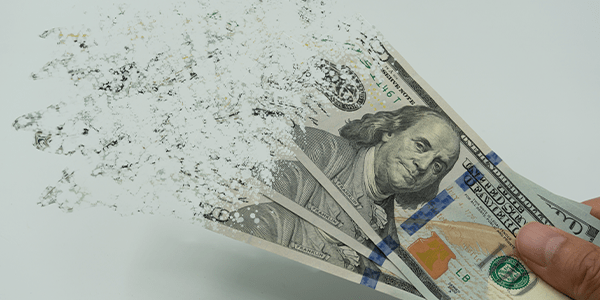 (PatriotHQ) After the crash of Silicon Valley Bank and the disruption brought about by other small banks troubled depositors have been grabbing their money and running out the door, but where is all the money going?
(PatriotHQ) After the crash of Silicon Valley Bank and the disruption brought about by other small banks troubled depositors have been grabbing their money and running out the door, but where is all the money going?
Some money went into Big Banks, Crypto, Blue-Chip Stocks, Bonds, Mutual Fund and ETFs. However this only accounts for a portion of the money withdrawn.
This begs the question: Where is the rest of the billions of dollars hiding?
Grasp the size of the missing money because when Silicon Valley crashed, about 120 billion dollars' worth of deposits were lost by other small banks as well.
You read it correctly: $ 120,000,000,000.00 moved, reinvested or disappeared
After a rush for withdrawals, the United States government stepped in and assumed control of SVB, which has been an important lender to new businesses in the United States since the 1980s.
Customers of smaller financial institutions in the United States withdrew a record-breaking total of $119.9 billion for the week ended on March 15. The statistics was issued by the Federal Reserve on Friday demonstrated this point.
The largest decrease in deposits at small banks in the United States since the beginning of records in 1973. Its amount has been adjusted to account for the changing seasons. The losses incurred by small banks were $107.8 billion when seasonal factors were ignored.
The large banks received a healthy portion of the funds. These two reasons led to an increase in deposits of $66.7 billion before the effect of the time of year was taken into account.
After taking into consideration the season, the data provided by the Fed reveals deposits made at commercial banks in the United States have decreased by a total of $98.4 billion. The decline amounted to $52.8 billion even when taking into account the different seasons.
Big banks are defined as the top 25 domestic commercial banks in terms of total assets held within their respective nations. Hence, Silicon Valley Bank, which ranked eighteenth in terms of total assets, would be counted among the large banks gained deposits collectively as a whole. To put it another way, the decrease in deposits at small banks does not take into account the amounts were withdrawn from Silicon Valley Bank.
In conclusion. If the numbers are added up it is clear there is a bunch of money missing. Actually it is not missing it is untraceable because it wasn’t deposited into the “big banks” or invested in registered investments. This means people are holding on to massive amounts of cold hard cash, and why shouldn’t they.
However, another idea has bubbled to the surface and the government is trying to squash it. Some believe billions upon billions of cold hard dollars are flowing into foreign banks many of which are safer, better funded and enjoy better overall protection.
Think this is lunacy and tin-foil-hat conspiracy theory? Then check out the list of the top safest banks in the world and then say it is nothing but balderdash!

Replies
Yes, I agree. Notice the only US bank on the list is AgriBank. They provide funding and bridge loans to farmers with depoist accounts much like credit Unions. So, they are a cash/cash institution. I don't think the general population is allowed to bank at the ArgiBank. If FDIC is so great then why aren't there several US banks in the top 50, or 10 or.....The only bank in the top 50 is the one which is NOT FDIC. What does this tell you........
It informs us that our founding fathers were correct... we must not allow the Central Banks... to coin money or set its value... those are two powers reserved to the Federal Government, Congress, and the US Treasury. Congress has no real authority to authorize the FED or to assign its authority to coin money or to set its value to the FED.
Eisenhower and Kenndy both warned of permitting the FED to manage our money ... to hold our gold and silver reserves as collateral for their issuing Federal Reserve Notes... and effectively charging us interest on our own money.
-
1
-
2
of 2 Next